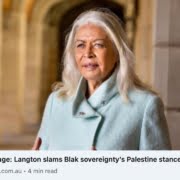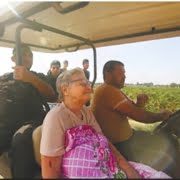The Israel-Hamas war that began on October 7, 2023 is a war different from other wars in the modern era. It is a war in which women are a strategic target. It is a war spearheaded by sexual violence. Female casualties are not ‘collateral damage’, the unintended consequences of war. They were designated by Hamas as military and political objectives.
Since Hamas launched its assault on Israel on October 7, it has succeeded in winning multiple victories despite not winning any military victory.
Its victories stem from its use and abuse of women.
Israel’s losses stem in part from its failure to listen to women.
When Hamas, the Government of Gaza, launched its surprise attack on Israel, it did not intend to engage Israeli soldiers in combat. Instead, as Hamas documents at the scene of the massacre of 1200 Israelis reveal, there were detailed plans of where to attack Israeli civilians in their homes and at a music festival. Specific plans of attack for each village included the intentional targeting of women and children.
The objective of Hamas was not only to kill the maximum number of civilians, but also to unleash bestial sexual brutality against them. This mission can best be described as – ‘to dishonour and to provoke’. The well-disciplined and well-equiped army of the Hamas Government carried out premeditated and systematic mass rape, sexual atrocities, mutilation and murder of Israeli girls, young women and old women.
Mick Ryan, a retired Australian general described some of the actual footage of the Hamas assault:
“Some smartphone clips came from the perpetrators of the October 7 attacks in Israel, who delighted in the footage, and others from victims documenting their last moments. It is the most horrifying thing I have ever watched. It includes subtitles but no commentary on scenes of murder, mutilation, and bestial cruelty.”
This type of warfare harks back to basic tribalism throughout history whereby one of the most compelling ways to defeat your enemy was to dishonour him by defiling and capturing his women. Still today in the Middle East, a man’s honour is fundamentally tied to his ability to protect and control his women. Honour killings are still a widespread occurrence. In Gaza under Hamas, Palestinian women have no legal protection against honour killings, as noted in a 2018 UN report.
Hamas celebrated its sexual victory over Israel and did not cover it up, as was the case with the sexual violence recently committed by Russians in Ukraine. For Hamas, sexual violence against Israeli women was not a shameful by-product of war, but instead, it was an integral part of their military and political strategy.
Victories on International Level
The assault on Israel on October 7 gave Hamas a victory on the international level in public opinion by establishing Hamas as the leader of the Palestinian people and by propelling the Palestinian issue into the headlines.
Hamas correctly calculated that its attack on Israeli women would be hailed as a victory and not as a war crime. That is why Hamas used bodycams and phones to record their sexual atrocities as they performed them and uploaded them in real time to Telegram and other social media. Immediately, thousands of Gazans and tens of thousands of pro-Palestinian supporters around the world marched in celebration of the Hamas assault. The savagery of mass rape and sexual atrocities against Israeli women were ‘contextualized’ and lauded as acts of resistance. This was the case even before Israel launched its counter-attack. It was also before the back-pedalling and denial of the sexual violence by Hamas and its supporters. And despite it being one of the most documented mass atrocities in history, neither U.N. Women nor any other U.N. body has condemned the sexual violence against Israeli women as it is mandated to do in conflict-related sexual violence. Nor have the major international women’s rights organisations issued condemnations.
Hamas also correctly calculated that its assault would trigger a major Israeli military counter offensive against Hamas. And Hamas was fully prepared for the war it had provoked. It quickly retreated into the safety of its massive network of underground tunnels in Gaza, with the added protection of 250 Israeli hostages. Here too Hamas ensured that there were plenty of female hostages. They included mothers, one with a 10 month-old baby, little girls aged 2 and 5, and many old women in their eighties. Another unprecedented war crime. There are still 17 young women being held in the tunnels since October 7. “Many girls experienced severe sexual abuse, they are injured – very, very serious and complex injuries that are not being treated,” said 17-year-old Agam Goldstein-Almog, who was released after 51 days in captivity.
Hamas preparations for war
For over a decade, Hamas had spent billions of dollars building more than 500 kilometres of these underground tunnels. Much of this money was from Qatar and delivered regularly in suitcases with the full knowledge of PM Netanyahu. Netanyahu thought this would stymie Hamas as a military and political threat. But instead Hamas used this money and its vast financial empire to execute its long term plan for war. It built a sophisticated underground infrastructure that included its headquarters and weapons factories concealed below hospitals, schools and mosques. Most importantly, the tunnels were designed to provide protection for Hamas leaders and operatives.
Such lavish spending and meticulous preparation for war and the inevitable Israeli counteroffensive, could not have overlooked the danger to the Palestinian population in Gaza. But it would appear that Hamas, despite being the Government of Gaza since 2007, chose not to provide protection for Palestinian civilians.
It did not spend any of its billions to build bomb shelters or any other defence structures to protect them. And when the war started, Palestinian civilians were denied entry to the safety of the tunnels and left exposed, defenceless in the face of Israeli bombing and the crossfire of battle.
When questioned about its failure to provide bomb shelters for the people in Gaza, Moussa Abu Marzouk, the Hamas deputy political leader acknowledged in an interview that “ the tunnels in Gaza were built to protect Hamas fighters and not civilians. Protecting Gaza civilians is the responsibility of the U.N. and Israel.”
The vast majority of over 23,000 Palestinians killed so far in the war are women and children.
It would not have been hard to predict that Hamas would seek to translate this terrible toll to its political advantage. Images of dead and injured Palestinian women and children flashed around the world and spurred protests.
Another Hamas victory was achieved with the international condemnation of Israel and the world-wide upsurge in anti-Semitism.
These protests were then translated into political pressure on governments to call for a ceasefire at the U.N. A ceasefire would certainly save lives, and it would also rescue the Hamas leadership in Gaza.
Now Hamas has achieved another extraordinary victory as a consequence of its October 7 assault. It has succeeded in having Israel brought before the International Court of Justice accused of genocide. And yet it is the Hamas attack that has been described as a pogrom against the Jewish people, and over 200 legal experts argue that it meets the criteria of genocide.
The Spotters
Is there any basis for arguing that this sequence of developments could have been otherwise?
Nothing would have deterred Hamas from executing its long planned attack. But perhaps Israel might have been better prepared had it listened to women.
There were 24 young Israeli women called the ‘Spotters’.
Spotters are the young female conscripts whose task it was to sit all day in front of their computers in their base on the Israel-Gaza border monitoring surveillance cameras in order to spot any unusual activity on the other side of the border. They were unarmed. They were amongst the first to be sexually abused and massacred by Hamas as it burst across the border on October 7. Of the 24 spotters at the base on that day, 15 of them were killed and 7 abducted as hostages. Only 2 escaped.
For months prior to October 7, these young women had been doing their job meticulously. They noticed military style preparations by Hamas near the border. They warned that an attack was being prepared and even surmised that it would be carried out on a Jewish holiday. They repeatedly sent the detailed information and warnings up the chain to their IDF superiors. But their information and warnings were dismissed with consummate male chauvinism. They were made to feel that they and their observations and opinions as young women in the army hierarchy were worthless. They were even told that unless they stopped bothering their superiors with these reports they would be court martialed.
The terrible tragedy is that had the IDF listened to these young women, the scale and the devastation of the Hamas assault might have been mitigated. And so too the consequences.












